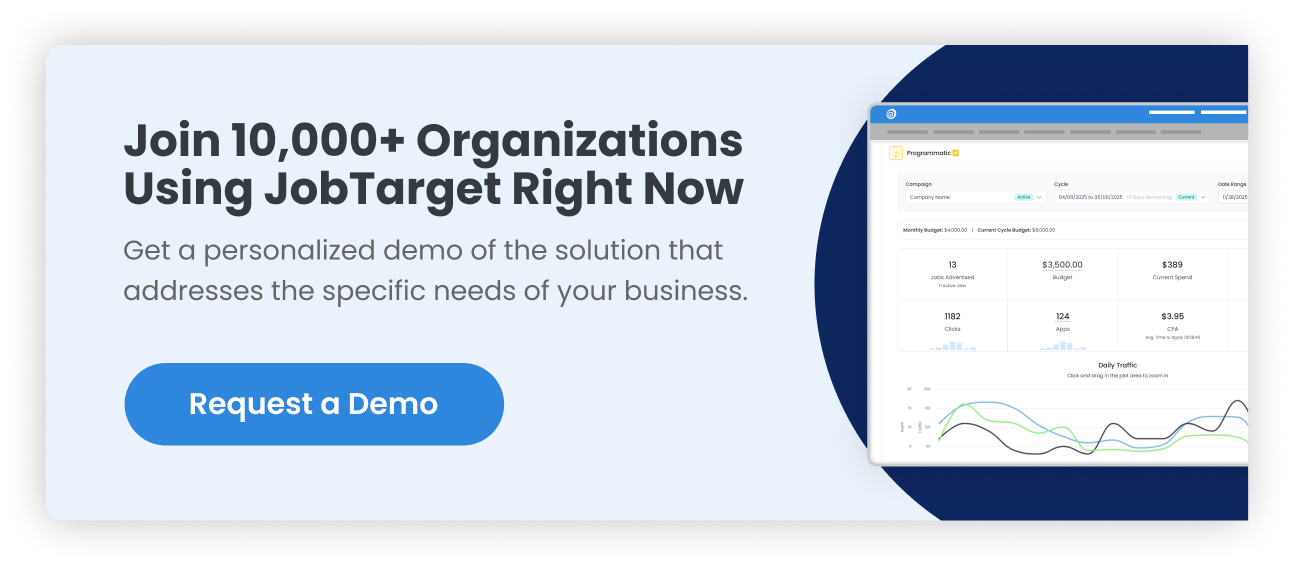We are all aware of the competitive labor market and how hard it can be to find and hire the right candidate. This competition is often discussed at a macro level, looking at the whole market, the economy, and national or global factors. This can make the problem feel insurmountable.
If you drill this discussion of a competitive labor market down to what your specific competitive landscape looks like, you can then take a more specific, practical, and data-driven approach to competing for quality talent for your open roles.
What are competitors for talent?
Similarly to how your company has market competitors that it needs to be aware of from a business perspective, you also have competitors for talent. Talent competitors can be both other players in your market or industry, as well as other types of businesses that hire for the same roles.
For example, if you are a hospital and you’re trying to hire a surgeon, your competition for talent will probably only include other hospitals and medical practices. If you’re that same hospital and you are trying to hire someone to work in your gift shop, your competition expands to include retail shops.
To understand your competitive landscape, you will need to keep an eye on both direct market competitors and other companies that hire for similar roles.
How have hiring strategies been evolving?
With the advancement of technology in the recruiting space and the shifts in the current job market, the strategies used to find the right candidate have also evolved. Remote work opportunities are critical to many job seekers after the major shift to remote work during the global Covid-19 pandemic. According to a Robert Half survey, 87% of workers thinking about changing jobs are looking into fully remote or hybrid roles.
Candidates want flexibility, and recruiters need to keep that in mind for their hiring strategies. In addition to the rise in the popularity of remote work, job seekers now more than ever care about the organization they are applying to. Aspects of a company, such as the company’s culture, are critical to job seekers.
When adjusting your strategy, review your job applications and look for areas that could be improved, including information on work schedule flexibility and information on company culture and priorities, while keeping it simple but informative. Check out our blog post that can point you in the right direction here.
What strategies can be used to compete for talent?
Strengthen Employer Branding
Marketing the role and the organization is key to attracting talent. Candidates look at a company’s reputation, corporate responsibility, diversity and inclusion, benefits offered, and more when considering making a move.
If you are not making the effort to clearly communicate your employer brand, job seekers will not feel a connection to and interest in your company. Take a look at how your competitors for talent are positioning their employer brand. Understand what might be attractive about it to a job seeker and how it compares to your own employer brand.
Include Benefits in Your Job Postings
Benefits are a top factor job seekers look for and can strengthen your offering against competitors. Including the benefits can increase conversions on your job application and help you create a stronger candidate pipeline. These benefits can be but are not limited to remote work opportunities, unlimited PTO, bonus programs, health insurance, a 401K plan, and more.
Again, it’s important to know how your benefits stack up to competitors. Certain industries or locations often have a certain expectation when it comes to benefits. For example, candidates applying to roles with tech companies have come to expect unlimited PTO and companies around New York City will often offer “Summer Fridays”. Make sure you’re at least meeting the expectations job seekers have, if not leveraging additional benefits to get an edge on the competition.
Leverage Compensation Data
Compensation is the most important, and often the most competitive, factor a job seeker considers when deciding to apply for or accept a role. It’s important to gather as much local market salary data as you can. Knowing the average salary for your open role can help give you an idea if you are offering a competitive salary. You do not want to put in all the effort of advertising a role, interviewing candidates, and finding the perfect person for the job, only to lose them because you are offering a salary that is not competitive.
Utilize These Strategies to Compete with the Best
With these strategies, you can start to become competitive in attracting talent. If you strengthen your employer branding, use compensation data, and include benefits in the job description, that is an excellent first step to finding the right candidate you need to fill the role.
When it comes to the data, you may need an intelligent tool to help you utilize data in your strategy. JobTarget offers a solution to help you gain the intel you need to compete for talent. Reach out to our sales team or your JobTarget Relationship Manager to learn more.
Contact us here.


.png)





